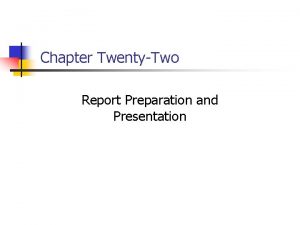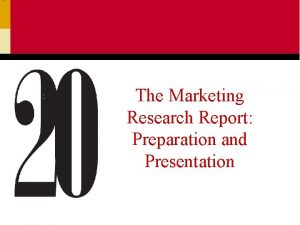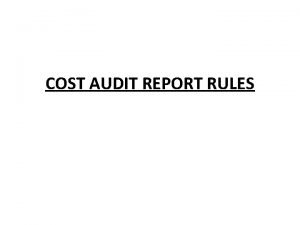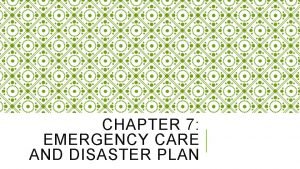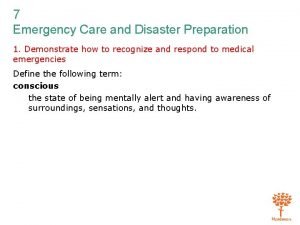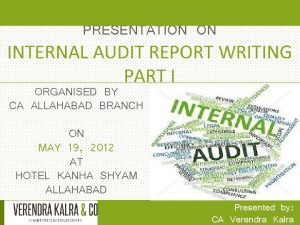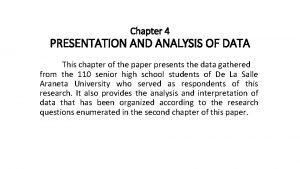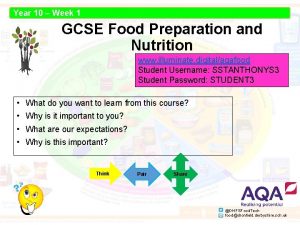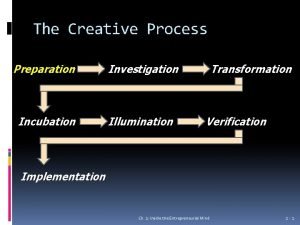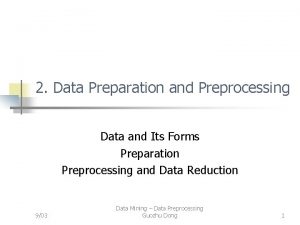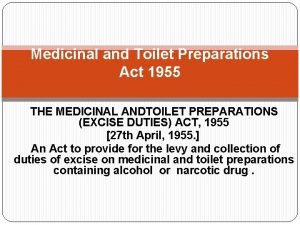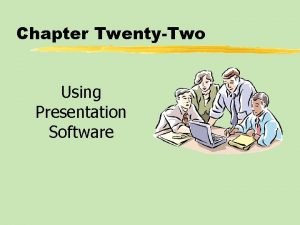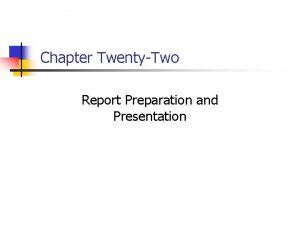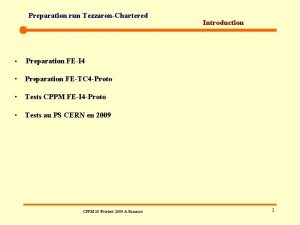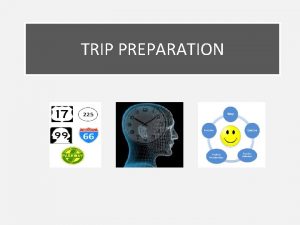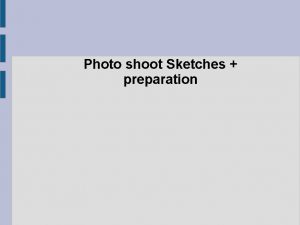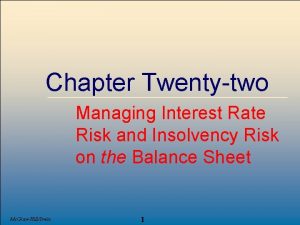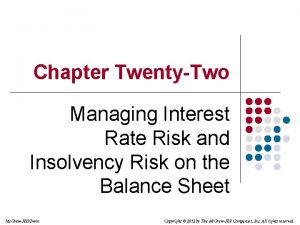Chapter TwentyTwo Report Preparation and Presentation 22 2


































- Slides: 34

Chapter Twenty-Two Report Preparation and Presentation

22 -2 Chapter Outline 1) Overview 2) Importance of the Report and Presentation 3) The Report Preparation and Presentation Process 4) Report Preparation i. Report Format ii. Report Writing iii. Guidelines for Tables iv. Guidelines for Graphs 5) Oral Presentation

22 -3 Chapter Outline 6) Reading the Research Report i. Addresses the Problem ii. Research Design iii. Execution of the Research Procedures iv. Numbers and Statistics v. Interpretations and Conclusions vi. Generalizability vii. Disclosure 7) Research Follow-Up i. Assisting the Client ii. Evaluation of the Research Process

22 -4 Chapter Outline 8) International Market Research 9) Ethics in Market Research 10) Internet & Computer Applications 11) Focus on Burke 12) Summary 13) Key Terms and Concepts

22 -5 Importance of the Report and Presentation For the following reasons, the report and its presentation are important parts of the marketing research project: 1. They are the tangible products of the research effort. 2. Management decisions are guided by the report and the presentation. 3. The involvement of many marketing managers in the project is limited to the written report and the oral presentation. 4. Management's decision to undertake marketing research in the future or to use the particular research supplier again will be influenced by the perceived usefulness of the report and the presentation.

The Report Preparation and Presentation Process Fig. 22. 1 Problem Definition, Approach, Research Design, and Fieldwork Data Analysis Interpretations, Conclusions, and Recommendations Report Preparation Oral Presentation Reading of the Report by the Client Research Follow-Up 22 -6

22 -7 Report Format I. Title page II. Letter of transmittal III. Letter of authorization IV. Table of contents V. List of tables VI. List of graphs VII. List of appendices VIII. List of exhibits IX. Executive summary a. Major findings b. Conclusions c. Recommendations

22 -8 Report Format X. Problem definition a. Background to the problem b. Statement of the problem XI. Approach to the problem XII. Research design a. Type of research design b. Information needs c. Data collection from secondary sources d. Data collection from primary sources e. Scaling techniques f. Questionnaire development and pretesting g. Sampling techniques h. Fieldwork

22 -9 Report Format XIII. Data analysis a. Methodology b. Plan of data analysis XIV. Results XV. Limitations and caveats XVI. Conclusions and recommendations XVII. Exhibits a. Questionnaires and forms b. Statistical output c. Lists

Elrick & Lavidge Guidelines Title Page Use client language in title — avoid "research-eze. ” § "Practices Followed in Selecting Long-Distance Carriers“ is better than "Long-Distance Service Study. ” § “Customers' Reactions to an Expanded Financial/ Insurance Relationship” is better than "Relationship Study. " 22 -10

Elrick & Lavidge Guidelines 22 -11 Conclusions concerning, for example: § customer behavior § customer attitudes or perceptions § the nature of the markets studied Generally, in studies with samples designed to represent the market. Avoid interesting results that are not relevant to the conclusions § May be in the form of statement or paragraphs § Use subheadings to identify conclusions covering different subjects or market segments

Elrick & Lavidge Guidelines 22 -12 Recommendations regarding actions that should be taken or considered in light of the research results: § Add/drop a product § What to say in advertising__advertising positioning § Market segments to select as primary targets § How to price product § Further research that should be considered Should be related to the stated purpose of the research. Sometimes omitted, for example: § Client staff members want to author the recommendations § Study designed merely to familiarize client with a market Most clients are interested in our suggestions, in spite of the fact that we may not be familiar with internal financial issues and other internal corporate factors.

22 -13 Report Writing n n n Readers. A report should be written for a specific reader or readers: the marketing managers who will use the results. Easy to follow. The report should be easy to follow. It should be structured logically and written clearly. Presentable and professional appearance. The looks of a report are important. Objective. Objectivity is a virtue that should guide report writing. The rule is, "Tell it like it is. " Reinforce text with tables and graphs. It is important to reinforce key information in the text with tables, graphs, pictures, maps, and other visual devices. Terse. A report should be terse and concise. Yet, brevity should not be achieved at the expense of completeness.

22 -14 Guidelines for Tables n n n Title and number. Every table should have a number (1 a) and title (1 b). Arrangement of data items. The arrangement of data items in a table should emphasize the most significant aspect of the data. Basis of measurement. The basis or unit of measurement should be clearly stated (3 a). Leaders, rulings, spaces. Leaders, dots or hyphens used to lead the eye horizontally, impart uniformity and improve readability (4 a). Instead of ruling the table horizontally or vertically, white spaces (4 b) are used to set off data items. Skipping lines after different sections of the data can also assist the eye. Horizontal rules (4 c) are often used after the headings. Explanations and comments: Headings, stubs, and footnotes. Designations placed over the vertical columns are called headings (5 a). Designations placed in the left-hand column are called stubs (5 b). Information that cannot be incorporated in the table should be explained by footnotes (5 c). Sources of the data. If the data contained in the table are secondary, the source of data should be cited (6 a).

22 -15 U. S. Auto Sales 1997 - 2001 Table 22. 1 1 a 3 a 4 c 1 b 4 a 5 b 6 a 5 c * - includes all other producers Source: Company Websites 4 b 2 a

Guidelines for Graphs 22 -16 Geographic and Other Maps n n Geographic maps can pertain to countries, states, counties, sales territories, and other divisions. Chapter 21 showed examples of product-positioning.

Guidelines for Graphs 22 -17 Round or Pie Charts n n n In a pie chart, the area of each section, as a percentage of the total area of the circle, reflects the percentage associated with the value of a specific variable. A pie chart is not useful for displaying relationships over time or relationships among several variables. As a general guideline, a pie chart should not require more than seven sections.

22 -18 Pie Chart of 1996 U. S. Auto Sales Fig. 22. 2

Guidelines for Graphs 22 -19 Line Charts n n n A line chart connects a series of data points using continuous lines. This is an attractive way of illustrating trends and changes over time. Several series can be compared on the same chart, and forecasts, interpolations, and extrapolations can be shown.

22 -20 Line Chart of Total U. S. Auto Sales Units Fig. 22. 3 Year

Guidelines for Graphs 22 -21 Line Charts n n A stratum chart is a set of line charts in which the data are successively aggregated over the series. Areas between the line charts display the magnitudes of the relevant variables.

22 -22 Stratum Chart of Total U. S. Auto Sales Fig. 22. 4

Guidelines for Graphs Pictographs n n A pictograph uses small pictures or symbols to display the data. Pictographs do not depict results precisely. Hence, caution should be exercised when using them. 22 -23

22 -24 Pictograph for 1996 U. S. Auto Sales Fig. 22. 5 *Each Symbol Equals 1, 000 Units

Guidelines for Graphs Histograms and Bar Charts n n A bar chart displays data in various bars that may be positioned horizontally or vertically. The histogram is a vertical bar chart and in which the height of the bars represents the relative or cumulative frequency of occurrence of a specific variable. 22 -25

22 -26 Histogram of 1996 U. S. Auto Sales Units Figure 22. 6 Make

Guidelines for Graphs 22 -27 Schematic Figures and Flow Charts n n n Schematic figures and flow charts take on a number of different forms. They can be used to display the steps or components of a process, as in Figure 22. 1. Another useful form of these charts is a classification diagram. Examples of classification charts for classifying secondary data were provided in Chapter 4 (Figs. 4. 1 to 4. 4). An example of a flow chart for questionnaire design was given in Chapter 10 (Figure 10. 2).

22 -28 Oral Presentation n n n The key to an effective presentation is preparation. A written script or detailed outline should be prepared following the format of the written report. The presentation must be geared to the audience. The presentation should be rehearsed several times before it is made to the management. Visual aids, such as tables and graphs, should be displayed with a variety of media. It is important to maintain eye contact and interact with the audience during the presentation.

22 -29 Oral Presentation n n n Filler words like "uh, " "y'know, " and "all right, " should not be used. The "Tell 'Em" principle is effective for structuring a presentation. Another useful guideline is the "KISS 'Em" principle, which states: Keep It Simple and Straightforward (hence the acronym KISS). Body language should be employed. The speaker should vary the volume, pitch, voice quality, articulation, and rate while speaking. The presentation should terminate with a strong closing.

22 -30 Reading the Research Report n n Addresses the Problem – The problem being addressed should be clearly identified and the relevant background information provided. The research design should be clearly described in non-technical terms. Execution of the Research Procedures – The reader should pay special attention to the manner in which the research procedures were executed. Numbers and statistics reported in tables and graphs should be examined carefully by the reader.

22 -31 Reading the Research Report n n n Interpretation and Conclusions – The interpretation of the basic results should be differentiated from the results per se. Any conclusions or recommendations made without a specification of the underlying assumptions or limitations should be treated cautiously by the reader. Generalizability – It is the responsibility of the researcher to provide evidence regarding the reliability, validity, and generalizability of the findings. Disclosure – The reader should carefully examine whether the spirit in which the report was written indicates an honest and complete disclosure of the research procedures and results.

22 -32 Research Follow-up n n Assisting the Client – The researcher should answer questions that may arise and help the client to implement the findings. Evaluation of the Research Project – Every marketing research project provides an opportunity for learning and the researcher should critically evaluate the entire project to obtain new insights and knowledge.

22 -33 SPSS Windows n n While the normal graphs can be produced using the Base module of SPSS, for more extensive graphing, the Delta. Graph package can be used. This package has extensive graphing capabilities with 80+ chart types and 200+ chart styles. Likewise, SPSS Tables enables the researcher to create even complicated tables. For example, the results of multiple response tables can be condensed into a single table. The researcher can create a polished look by changing column width, adding boldface, drawing lines, or aligning.

22 -34 SPSS Windows n n SPSS OLAP cubes are interactive tables that enable you to slice your data in different ways for data exploration and presentation. Smart. Viewer enables the researcher to distribute reports, graphs, tables, even pivotal report cubes, over the web. Company managers can be empowered to interact with the results by putting a report cube on the Web, intranet, or extranet. Thus, they can answer their own questions by drilling down for more detail and creating new views of the data.
 Report preparation and presentation
Report preparation and presentation Report preparation and presentation in marketing research
Report preparation and presentation in marketing research Annexure of cost audit report
Annexure of cost audit report Writing a status report
Writing a status report Sinciput presentation
Sinciput presentation Cephalic presentation
Cephalic presentation Partial report technique
Partial report technique Chapter 7 emergency care and disaster preparation
Chapter 7 emergency care and disaster preparation Emergency care and disaster preparation chapter 7
Emergency care and disaster preparation chapter 7 Book report presentation powerpoint
Book report presentation powerpoint Lab report presentation
Lab report presentation 5 cs of audit report writing
5 cs of audit report writing Chapter 8 the flow of food preparation
Chapter 8 the flow of food preparation Simmer definition food
Simmer definition food Chapter p preparation for calculus
Chapter p preparation for calculus Preparation and maintenance of records and reports
Preparation and maintenance of records and reports Chapter 4 data analysis
Chapter 4 data analysis Illuminate aqa food preparation and nutrition
Illuminate aqa food preparation and nutrition Investigation in creative process
Investigation in creative process Parasite in blood smear
Parasite in blood smear Domain 1: planning and preparation reflection examples
Domain 1: planning and preparation reflection examples Kmno4 uses
Kmno4 uses Domain 1: planning and preparation examples
Domain 1: planning and preparation examples Klasifikasi dapur
Klasifikasi dapur Hollow ground bevel
Hollow ground bevel Georgia tapp program
Georgia tapp program Define food preparation
Define food preparation Domain 1: planning and preparation examples
Domain 1: planning and preparation examples Data preparation and basic data analysis
Data preparation and basic data analysis Responsibility of salesperson
Responsibility of salesperson Sequential feature selection
Sequential feature selection Post stocking management
Post stocking management T-tess domain 4 examples
T-tess domain 4 examples Tools utensils and equipment needed in egg preparation
Tools utensils and equipment needed in egg preparation Toilet preparation act 1955
Toilet preparation act 1955
